Selection of Appropriate Symbolic Regression Models Using Statistical and Dynamic System Criteria: Example of Waste Gasification
Abstract
:1. Introduction
2. Gasification Models
2.1. Hydrogen H2
2.1.1. Model 1 of Hydrogen H2
2.1.2. Model 2 of Hydrogen H2
2.1.3. Model 3 of Hydrogen H2
2.2. Hydrogen CO2
2.2.1. Model 1 of Carbon Dioxide CO2
2.2.2. Model 2 of Carbon Dioxide CO2
3. Dynamic System Criteria for Selection of Appropriate Models
3.1. Entropy Notions
3.1.1. Approximate Entropy Eapp
3.1.2. Sample Entropy Esamp
3.2. Benchmark Models Application
3.3. Simulation Outputs
4. Conclusions
Author Contributions
Funding
Informed Consent Statement
Data Availability Statement
Conflicts of Interest
Appendix A
References
- Praks, P.; Brkić, D.; Najser, J.; Najser, T.; Praksová, R.; Stajić, Z. Methods of Artificial Intelligence for Simulation of Gasification of Biomass and Communal Waste. In Proceedings of the 22nd International Carpathian Control Conference (ICCC), Velké Karlovice, Czech Republic, 31 May–1 June 2021. [Google Scholar] [CrossRef]
- Praks, P.; Brkić, D. Symbolic Regression-Based Genetic Approximations of the Colebrook Equation for Flow Friction. Water 2018, 10, 1175. [Google Scholar] [CrossRef]
- Dresp-Langley, B.; Ekseth, O.K.; Fesl, J.; Gohshi, S.; Kurz, M.; Sehring, H.-W. Occam’s Razor for Big Data? On Detecting Quality in Large Unstructured Datasets. Appl. Sci. 2019, 9, 3065. [Google Scholar] [CrossRef]
- Baláš, M.; Lisý, M.; Štelcl, O. The Effect of Temperature on the Gasification Process. Acta Polytech. 2012, 52, 7–11. Available online: http://hdl.handle.net/10467/66949 (accessed on 10 July 2022). [CrossRef]
- Udrescu, S.-M.; Tegmark, M. AI Feynman: A physics-inspired method for symbolic regression. Sci. Adv. 2020, 6, eaay2631. [Google Scholar] [CrossRef]
- Cranmer, M.; Sanchez-Gonzalez, A.; Battaglia, P.; Xu, R.; Cranmer, K.; Spergel, D.; Ho, S. Discovering symbolic models from deep learning with inductive biases. Adv. Neural Inf. Process. Syst. 2020, 33, 17429–17442. Available online: https://proceedings.neurips.cc/paper/2020/file/c9f2f917078bd2db12f23c3b413d9cba-Paper.pdf (accessed on 8 July 2022).
- Pincus, S.M. Approximate entropy as a measure of system complexity. Proc. Natl. Acad. Sci. USA 1991, 88, 2297–2301. [Google Scholar] [CrossRef]
- Chon, K.H.; Scully, C.G.; Lu, S. Approximate entropy for all signals. IEEE Eng. Med. Biol. Mag. 2009, 28, 18–23. [Google Scholar] [CrossRef]
- Delgado-Bonal, A.; Marshak, A. Approximate Entropy and Sample Entropy: A Comprehensive Tutorial. Entropy 2019, 21, 541. [Google Scholar] [CrossRef]
- Richman, J.S.; Moorman, J.R. Physiological time-series analysis using approximate entropy and sample entropy. Am. J. Physiol. Heart Circ. Physiol. 2000, 278, H2039–H2049. [Google Scholar] [CrossRef]
- Yentes, J.M.; Hunt, N.; Schmid, K.K.; Kaipust, J.P.; McGrath, D.; Stergiou, N. The appropriate use of approximate entropy and sample entropy with short data sets. Ann. Biomed. Eng. 2013, 41, 349–365. [Google Scholar] [CrossRef]
- Buchlovská Nagyová, J.; Jansík, B.; Lampart, M. Detection of embedded dynamics in the Györgyi-Field model. Sci. Rep. 2000, 10, 21031. [Google Scholar] [CrossRef]
- Lampart, M.; Vantuch, T.; Zelinka, I.; Mišák, S. Dynamical properties of partial-discharge patterns. Int. J. Parallel Emergent Distrib. Syst. 2018, 33, 474–489. [Google Scholar] [CrossRef]
- Lampart, M.; Zapoměl, J. Motion of an Unbalanced Impact Body Colliding with a Moving Belt. Mathematics 2021, 9, 1071. [Google Scholar] [CrossRef]
- Lampart, M.; Martinovič, T. A survey of tools detecting the dynamical properties of one-dimensional families. Adv. Electr. Electron. Eng. 2017, 15, 304–313. [Google Scholar] [CrossRef]
- Akkaya, E.; Demir, A. Energy content estimation of municipal solid waste by multiple regression analysis. In Proceedings of the 5th International Advanced Technologies Symposium IATS’09, Karabuk, Turkey, 13–15 May 2009; pp. 13–15. Available online: https://www.academia.edu/download/54979427/IATS09_03-99_1292.pdf (accessed on 10 July 2022).
- Liu, J.-I.; Paode, R.D.; Holsen, T.M. Modeling the energy content of municipal solid waste using multiple regression analysis. J. Air Waste Manag. Assoc. 1996, 46, 650–656. [Google Scholar] [CrossRef]
- Chu, C.; Boré, A.; Liu, X.W.; Cui, J.C.; Wang, P.; Liu, X.; Chen, G.Y.; Liu, B.; Ma, W.C.; Lou, Z.Y.; et al. Modeling the impact of some independent parameters on the syngas characteristics during plasma gasification of municipal solid waste using artificial neural network and stepwise linear regression methods. Renew. Sustain. Energy Rev. 2022, 157, 112052. [Google Scholar] [CrossRef]
- Malaťáková, J.; Jankovský, M.; Malaťák, J.; Velebil, J.; Tamelová, B.; Gendek, A.; Aniszewska, M. Evaluation of Small-Scale Gasification for CHP for Wood from Salvage Logging in the Czech Republic. Forests 2021, 12, 1448. [Google Scholar] [CrossRef]
- Lapcik, V.; Lapcikova, M.; Hanslik, A.; Jez, J. Possibilities of gasification and pyrolysis technology in branch of energy recovery from waste. Inżynieria Mineralna 2014, 15, 149–154. Available online: http://potopk.com.pl/Full_text/2014_full/2014_1_19.pdf (accessed on 10 July 2022).
- Kůdela, J.; Smejkalová, V.; Šomplák, R.; Nevrlý, V. Legislation-induced planning of waste processing infrastructure: A case study of the Czech Republic. Renew. Sustain. Energy Rev. 2020, 132, 110058. [Google Scholar] [CrossRef]
- Ma, H.; Narayanaswamy, A.; Riley, P.; Li, L. Evolving symbolic density functionals. Science Advances. Available online: https://doi.org/10.1126/sciadv.abq0279 (accessed on 19 July 2022).
- Kizielewicz, B.; Więckowski, J.; Shekhovtsov, A.; Wątróbski, J.; Depczyński, R.; Sałabun, W. Study towards the time-based MCDA ranking analysis—A supplier selection case study. Facta Univ. Ser. Mech. Eng. 2021, 19, 381–399. [Google Scholar] [CrossRef]
- Bogach, N.; Boitsova, E.; Chernonog, S.; Lamtev, A.; Lesnichaya, M.; Lezhenin, I.; Novopashenny, A.; Svechnikov, R.; Tsikach, D.; Vasiliev, K.; et al. Speech Processing for Language Learning: A Practical Approach to Computer-Assisted Pronunciation Teaching. Electronics 2021, 10, 235. [Google Scholar] [CrossRef]
- Kantz, H.; Schreiber, T. Nonlinear Time Series Analysis, 2nd ed.; Cambridge University Press: Cambridge, UK, 2003. [Google Scholar] [CrossRef]


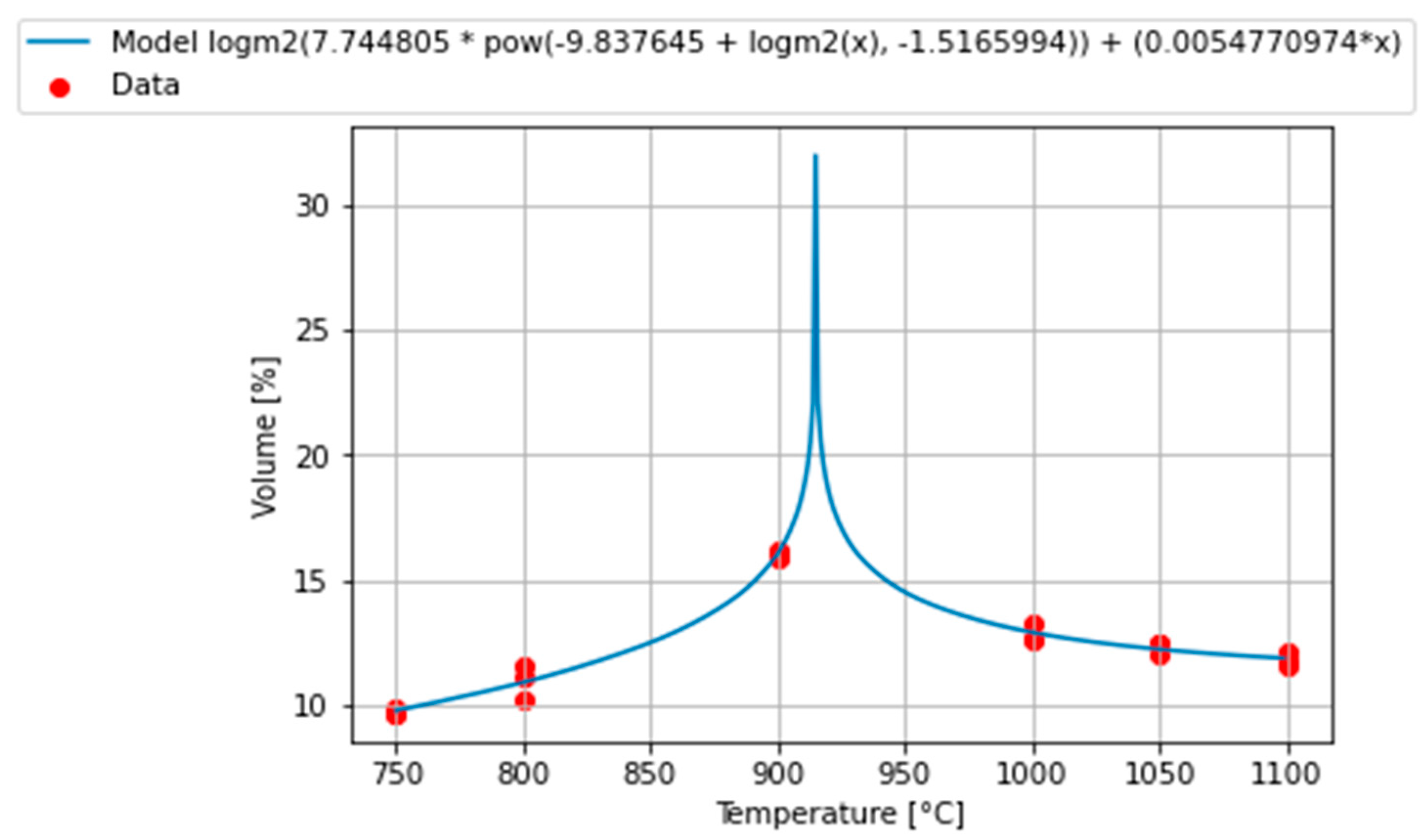
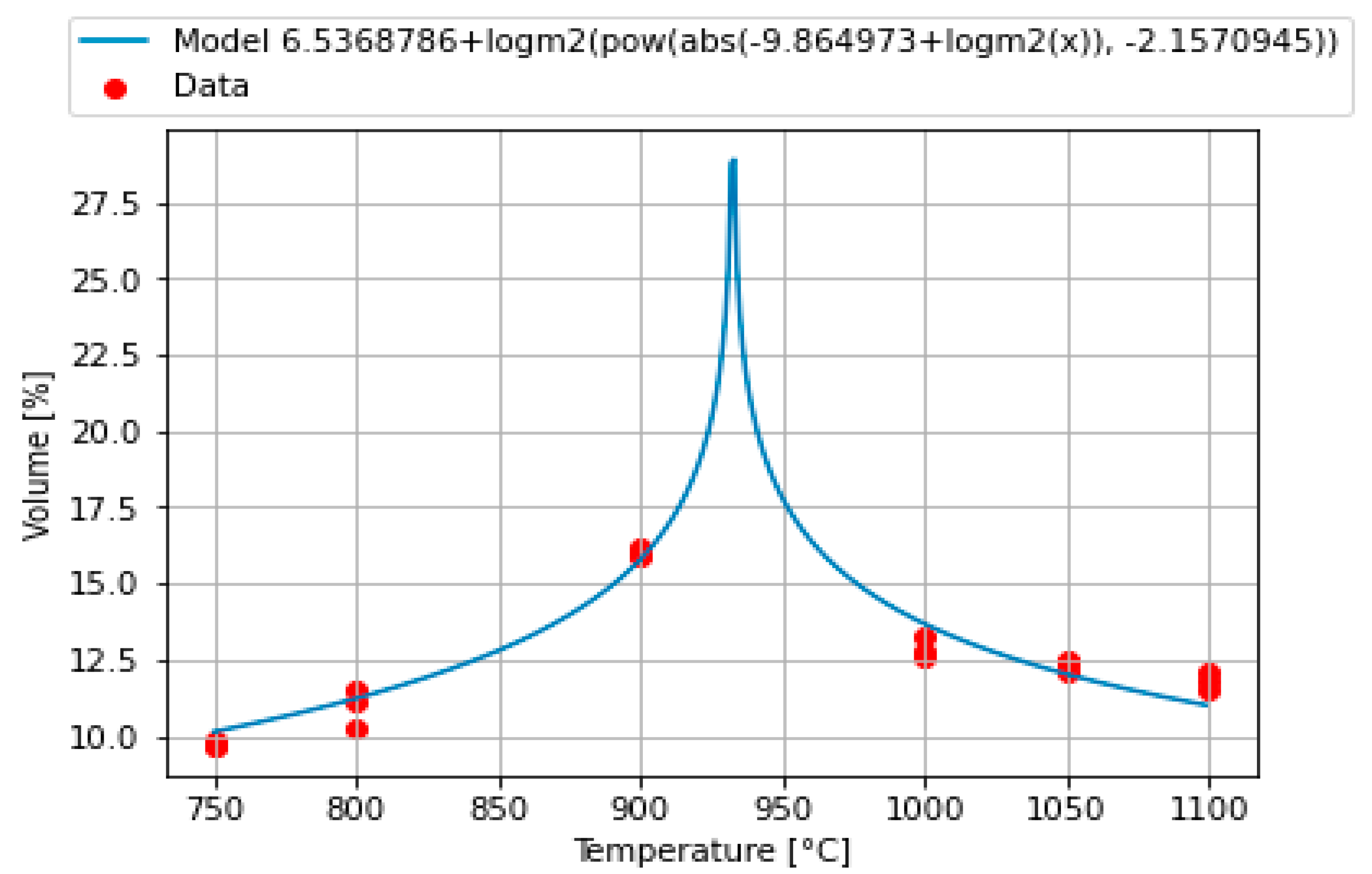
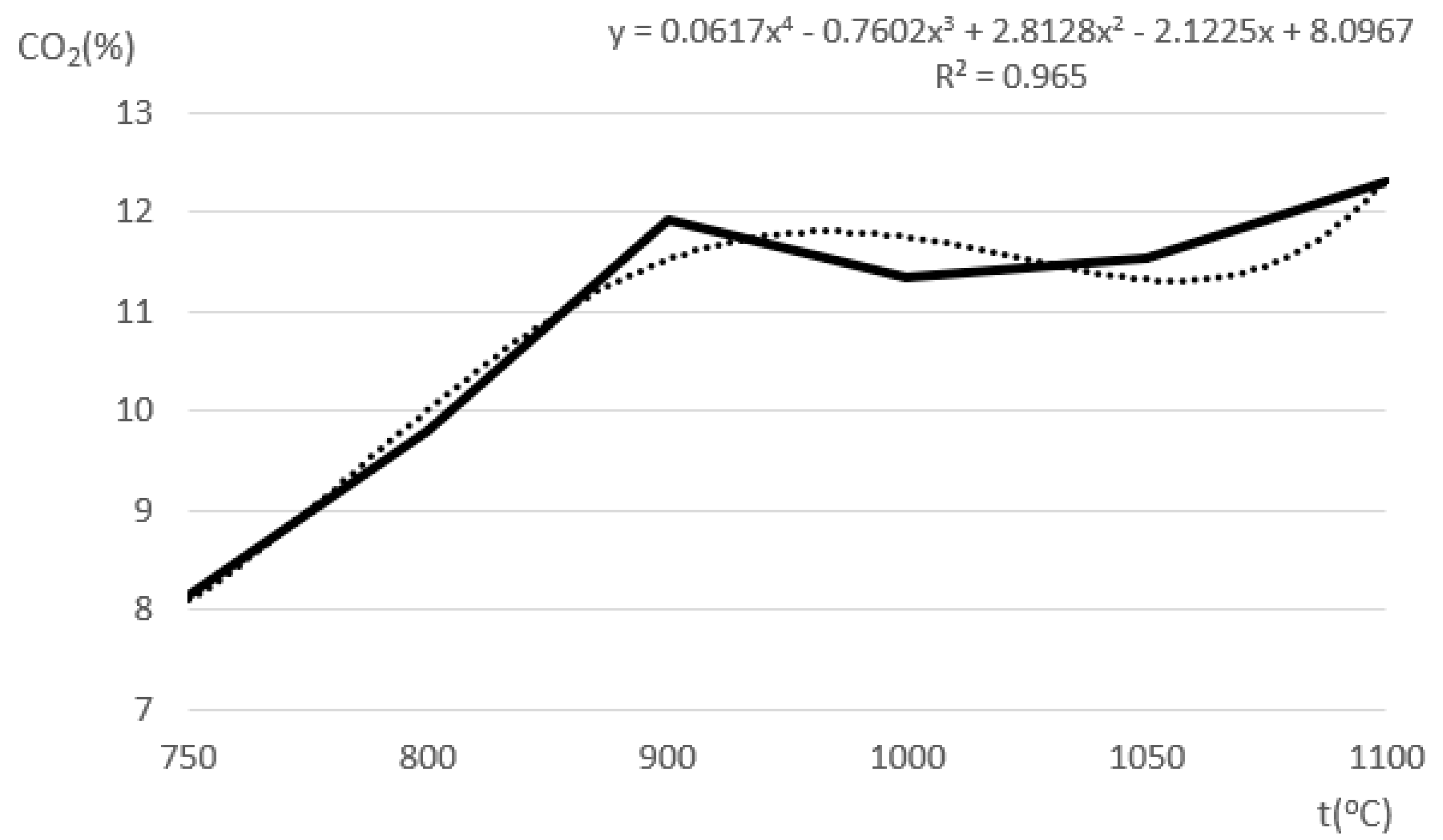
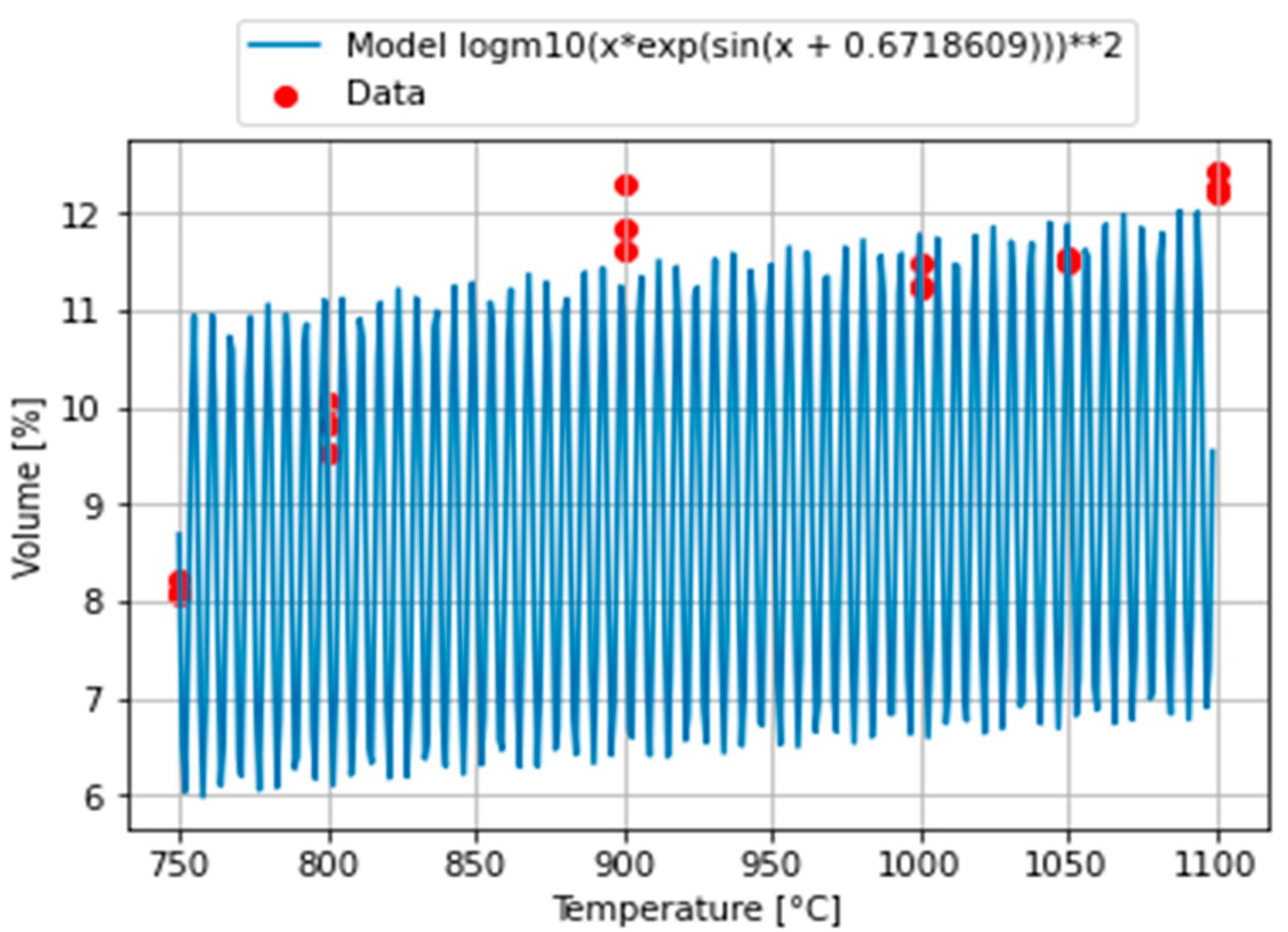
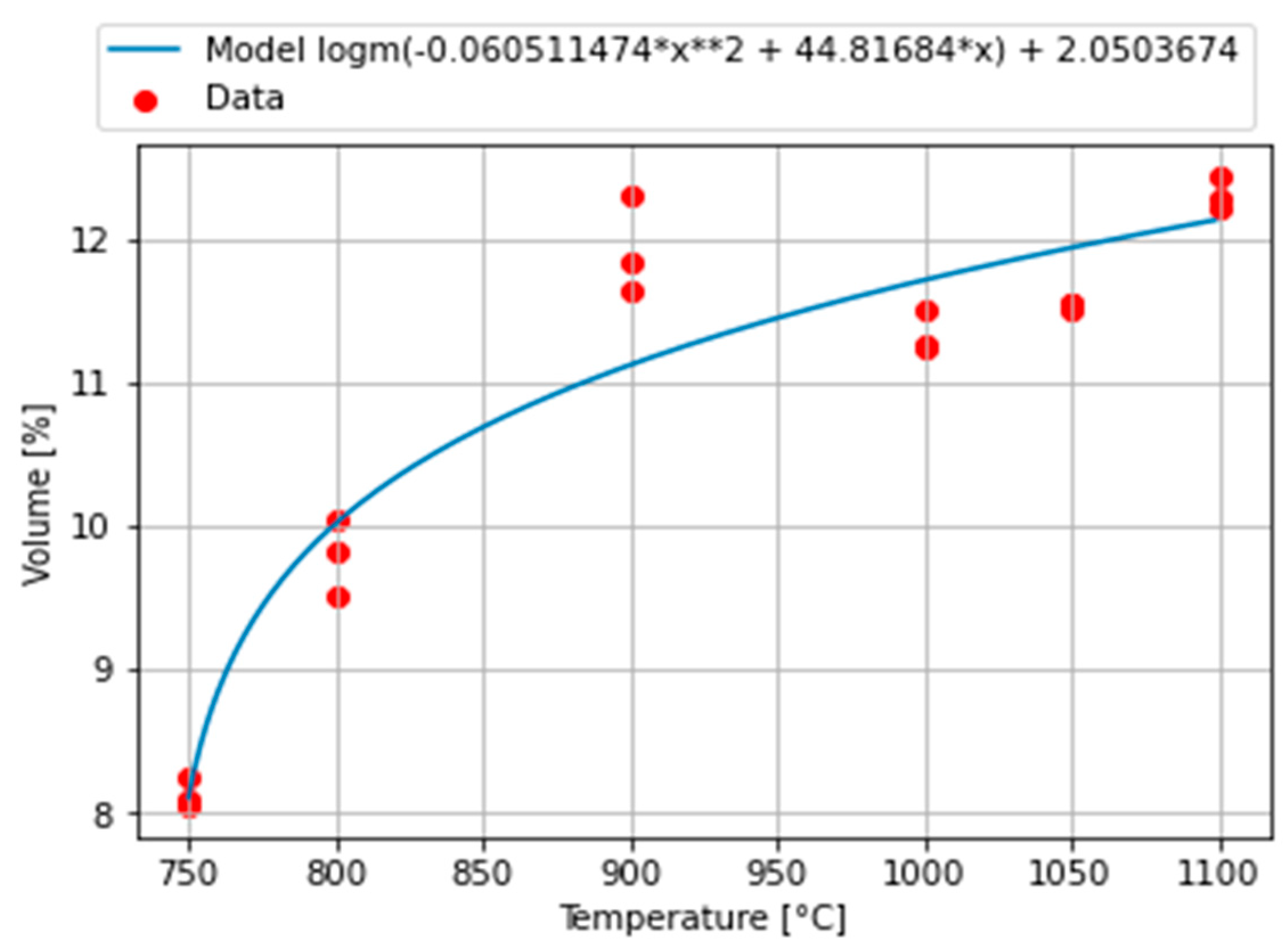
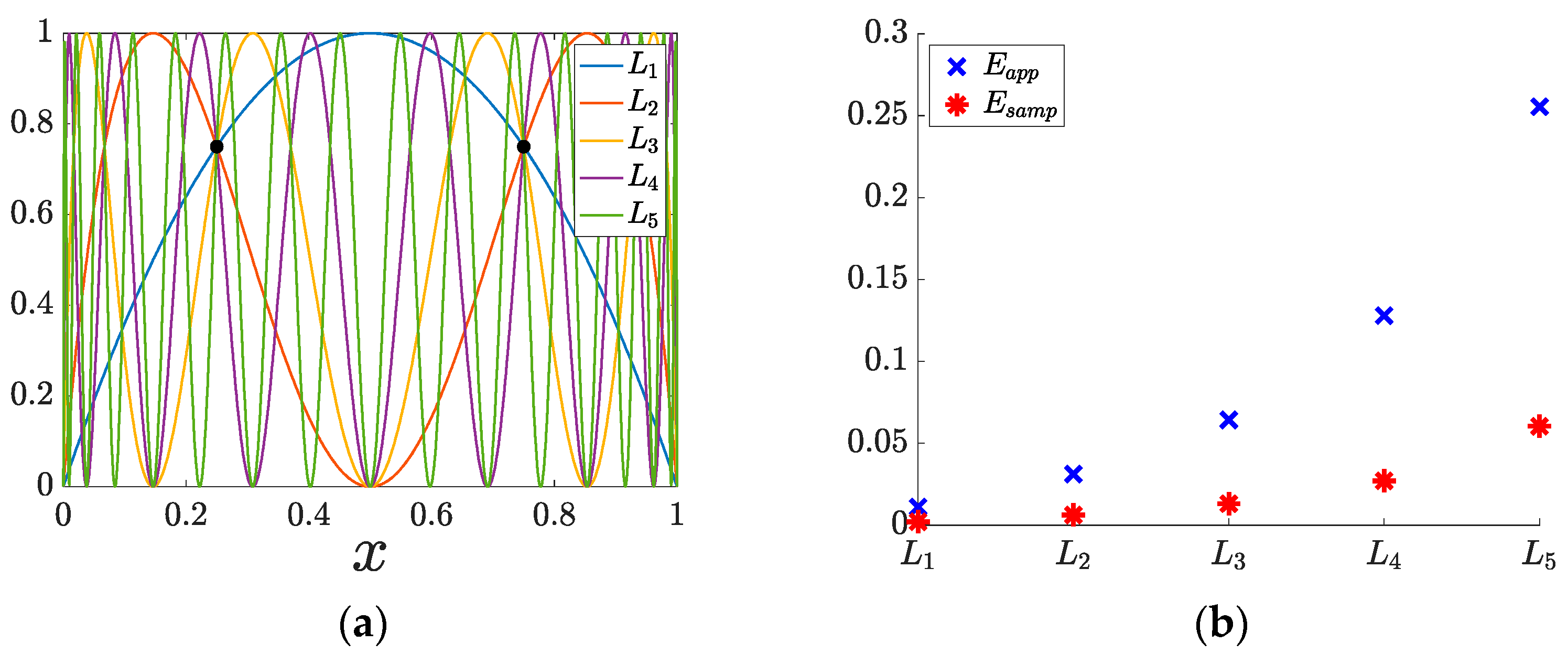
| t (°C) | 750 | 800 | 900 | 1000 | 1050 | 1100 |
|---|---|---|---|---|---|---|
| H2 (%) | 9.75 | 10.98 | 16.05 | 12.88 | 12.33 | 11.83 |
| t (°C) | 750 | 800 | 900 | 1000 | 1050 | 1100 |
|---|---|---|---|---|---|---|
| H2 (%) | 9.69 | 11.54 | 15.91 | 12.77 | 12.48 | 11.56 |
| H2 (%) 1 | 9.88 | 10.29 | 16.23 | 13.29 | 12.44 | 12.12 |
| H2 (%) 2 | 9.68 | 11.12 | 16.01 | 12.58 | 12.08 | 11.82 |
| t (°C) | 750 | 800 | 900 | 1000 | 1050 | 1100 |
|---|---|---|---|---|---|---|
| CO2 (%) | 8.13 | 9.8 | 11.93 | 11.33 | 11.53 | 12.3 |
| t (°C) | 750 | 800 | 900 | 1000 | 1050 | 1100 |
|---|---|---|---|---|---|---|
| CO2 (%) | 8.05 | 9.52 | 11.63 | 11.5 | 11.56 | 12.27 |
| CO2 (%) 1 | 8.09 | 9.83 | 12.31 | 11.23 | 11.5 | 12.21 |
| CO2 (%) 2 | 8.24 | 10.05 | 11.84 | 11.27 | 11.54 | 12.43 |
| Model 1 | Model 2 | Model 3 | |
|---|---|---|---|
| 0.0442 | 0.0015 | 0.0015 | |
| 0.0197 | 0.0003 | 0.0003 |
| Model 1 | Model 2 | |
|---|---|---|
| 0.0252 | 0 | |
| 0.0235 | 0 |
Publisher’s Note: MDPI stays neutral with regard to jurisdictional claims in published maps and institutional affiliations. |
© 2022 by the authors. Licensee MDPI, Basel, Switzerland. This article is an open access article distributed under the terms and conditions of the Creative Commons Attribution (CC BY) license (https://creativecommons.org/licenses/by/4.0/).
Share and Cite
Praks, P.; Lampart, M.; Praksová, R.; Brkić, D.; Kozubek, T.; Najser, J. Selection of Appropriate Symbolic Regression Models Using Statistical and Dynamic System Criteria: Example of Waste Gasification. Axioms 2022, 11, 463. https://doi.org/10.3390/axioms11090463
Praks P, Lampart M, Praksová R, Brkić D, Kozubek T, Najser J. Selection of Appropriate Symbolic Regression Models Using Statistical and Dynamic System Criteria: Example of Waste Gasification. Axioms. 2022; 11(9):463. https://doi.org/10.3390/axioms11090463
Chicago/Turabian StylePraks, Pavel, Marek Lampart, Renáta Praksová, Dejan Brkić, Tomáš Kozubek, and Jan Najser. 2022. "Selection of Appropriate Symbolic Regression Models Using Statistical and Dynamic System Criteria: Example of Waste Gasification" Axioms 11, no. 9: 463. https://doi.org/10.3390/axioms11090463
APA StylePraks, P., Lampart, M., Praksová, R., Brkić, D., Kozubek, T., & Najser, J. (2022). Selection of Appropriate Symbolic Regression Models Using Statistical and Dynamic System Criteria: Example of Waste Gasification. Axioms, 11(9), 463. https://doi.org/10.3390/axioms11090463








